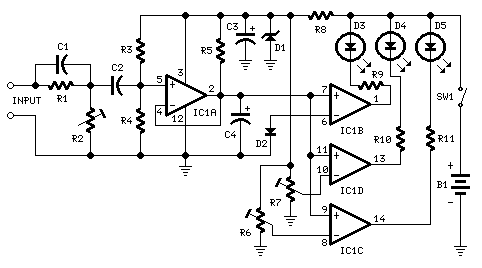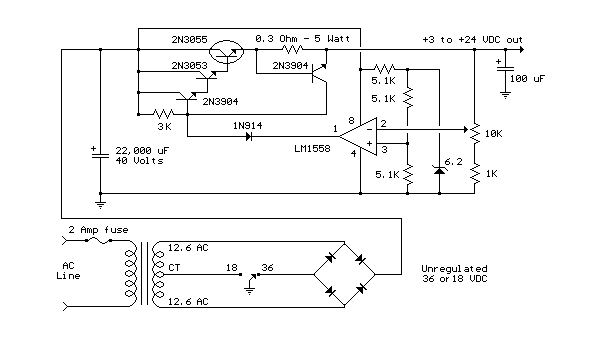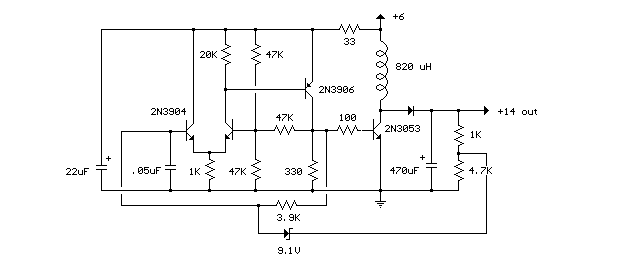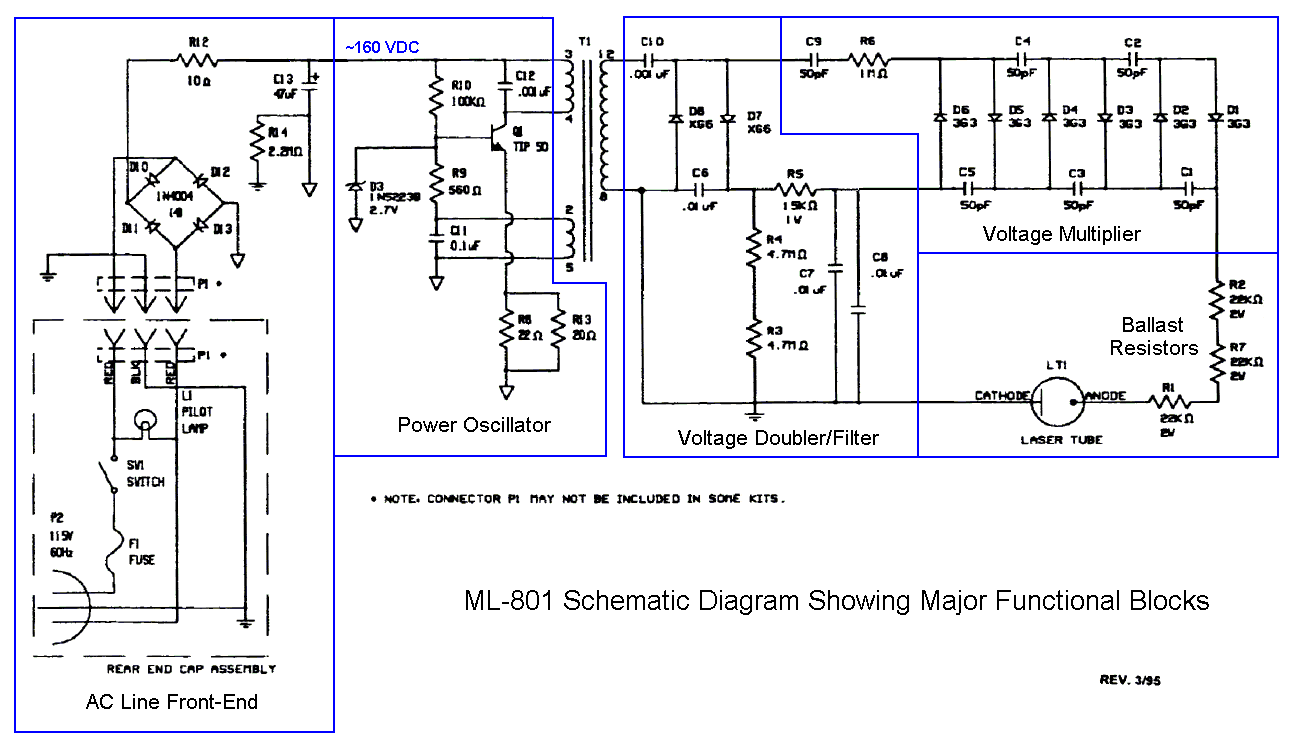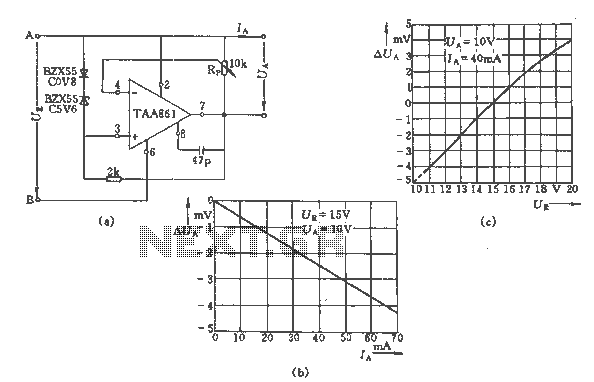
5V regulated power supply

This circuit is just an implementation of the 7805 integrated voltage regulator. What this little component does is to lower a voltage and stabilize it by reducing noise and ripple, in order for circuits to have the constant voltage needed to work correctly. More: You can find the datasheet by following the link: 7805, take note of the typical applications notes, you can find some more uses for this versatile little regulator.
The 7805 voltage regulator is a linear voltage regulator that provides a fixed output voltage of 5V, making it suitable for powering various electronic components and circuits that require a stable voltage supply. The device typically accepts a wide input voltage range, usually from 7V to 35V, ensuring compatibility with various power sources, including batteries and AC adapters.
The circuit implementation of the 7805 consists of the regulator itself, input and output capacitors, and sometimes a heat sink for thermal management. The input capacitor, typically in the range of 0.33µF to 1µF, is connected between the input pin and ground to filter high-frequency noise from the input voltage. The output capacitor, usually around 0.1µF, is placed between the output pin and ground to improve transient response and further reduce output noise.
In practical applications, the 7805 can be found in power supply circuits for microcontrollers, sensors, and other low-power devices. It is also employed in charging circuits, signal conditioning circuits, and as a reference voltage in analog systems. The ability to handle up to 1A of output current makes the 7805 suitable for a variety of low to moderate power applications.
Thermal considerations are essential when using the 7805, as excessive heat can lead to thermal shutdown. A heat sink may be necessary if the input voltage is significantly higher than the output voltage, particularly under high load conditions. The thermal performance can be enhanced by ensuring proper airflow around the regulator and by adhering to the manufacturer's thermal guidelines.
Overall, the 7805 voltage regulator is a reliable and widely used component in electronic design, providing a simple solution for achieving a stable 5V output in various applications.his circuit is just an implementation of the 7805 integrated voltage regulator. What this little component does is to lower a voltage and stabilize it by reducing noise and ripple, in order for circuits to have the constant voltage needed to work correctly. You can find the datasheet by following the link: 7805, take note of the typical applications notes, you can find some more uses for this versatile little regulator 🔗 External reference
The 7805 voltage regulator is a linear voltage regulator that provides a fixed output voltage of 5V, making it suitable for powering various electronic components and circuits that require a stable voltage supply. The device typically accepts a wide input voltage range, usually from 7V to 35V, ensuring compatibility with various power sources, including batteries and AC adapters.
The circuit implementation of the 7805 consists of the regulator itself, input and output capacitors, and sometimes a heat sink for thermal management. The input capacitor, typically in the range of 0.33µF to 1µF, is connected between the input pin and ground to filter high-frequency noise from the input voltage. The output capacitor, usually around 0.1µF, is placed between the output pin and ground to improve transient response and further reduce output noise.
In practical applications, the 7805 can be found in power supply circuits for microcontrollers, sensors, and other low-power devices. It is also employed in charging circuits, signal conditioning circuits, and as a reference voltage in analog systems. The ability to handle up to 1A of output current makes the 7805 suitable for a variety of low to moderate power applications.
Thermal considerations are essential when using the 7805, as excessive heat can lead to thermal shutdown. A heat sink may be necessary if the input voltage is significantly higher than the output voltage, particularly under high load conditions. The thermal performance can be enhanced by ensuring proper airflow around the regulator and by adhering to the manufacturer's thermal guidelines.
Overall, the 7805 voltage regulator is a reliable and widely used component in electronic design, providing a simple solution for achieving a stable 5V output in various applications.his circuit is just an implementation of the 7805 integrated voltage regulator. What this little component does is to lower a voltage and stabilize it by reducing noise and ripple, in order for circuits to have the constant voltage needed to work correctly. You can find the datasheet by following the link: 7805, take note of the typical applications notes, you can find some more uses for this versatile little regulator 🔗 External reference

